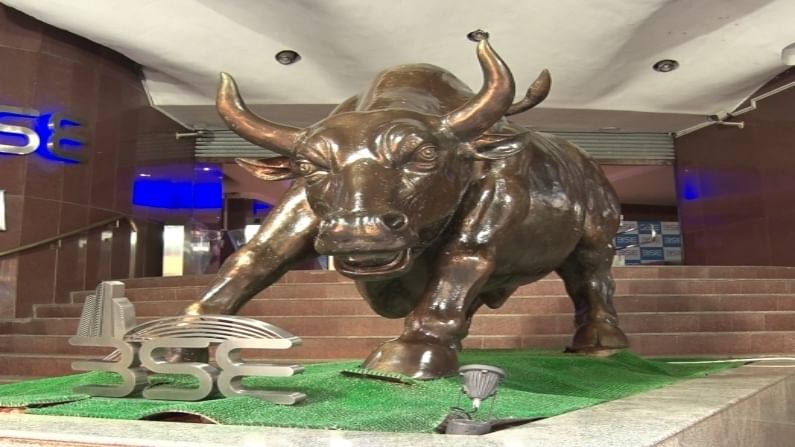Indian cos with $100 b m-cap is great news, but $1t is long way off. Here's a list of most valued cos around the world
As Adani Group of companies led by Gautam Adani recently became India’s third conglomerate to cross $100 billion market capitalisation, it is interesting to look at the list of companies globally which are in this club. In the domestic markets, Adani Group has now joined the Tata Group and Reliance Industries to touch a m-cap […]

As Adani Group of companies led by Gautam Adani recently became India’s third conglomerate to cross $100 billion market capitalisation, it is interesting to look at the list of companies globally which are in this club.
In the domestic markets, Adani Group has now joined the Tata Group and Reliance Industries to touch a m-cap of $100 billion.
On April 6, 2021, the total market cap of Adani Group’s six listed companies rose to Rs 7.84 lakh crore or $106.8 billion, according to stock exchange data. The six listed companies in Adani Group include Adani Enterprises, Adani Total Gas, Adani Transmission, Adani Ports, Adani Green Energy and Adani Power.
On the other hand, the Tata Group’s current market cap is around $242 billion while RIL m-cap is at $171 billion.
Around the world however, there are several listed companies in the 100 billion dollar club.
On US exchanges a whole lot of companies command this valuation. Companies like Honeywell International, CitiGroup, Charter Communications, American Tower, Texas Instruments, IBM, Union Pacific, Broadcom, IBM, Lockheed Martin, Wells Fargo, Philip Morris International have a market cap raging between $100 bn – $ 120 bn.
On UK and European exchanges, it is companies like HSBC Holdings, GlaxoSmithKline, Sanofi, Accenture, SAP and AstraZeneca which enjoy over a $100 billion valuation.
Companies with over $100 billion m-cap
| Company | Mkt cap ($ bn) |
|---|
| PayPal (United States) | 144.3 |
| Tesla (United States) | 144.2 |
| SAP (Germany) | 142.4 |
| McDonald’s (United States) | 139.5 |
| AstraZeneca (United Kingdom) | 137.7 |
| Unilever (Netherlands) | 130.6 |
| Sanofi (France) | 122.5 |
| Wells Fargo (United States) | 118.8 |
| Accenture (Ireland) | 118 |
| Philip Morris International (United States) | 116.2 |
| IBM (United States) | 111.5 |
| Lockheed Martin (United States) | 109.1 |
| Broadcom (United States) | 108.6 |
| Union Pacific (United States) | 108.4 |
| BHP Group (Australia) | 107.1 |
| Texas Instruments (United States) | 106.5 |
| Gilead Sciences (United States) | 105.8 |
| American Tower (United States) | 105.5 |
| HSBC Holdings (United Kingdom) | 105.3 |
| GlaxoSmithKline (United Kingdom) | 104.4 |
| Charter Communications (United States) | 104 |
| Citigroup (United States) | 101.1 |
| *Source: www.statista.com |
While it is good news that Indian group of companies are finding a place among highly valued companies in the world, there is still a long way for them to catch up with the top most valued companies in the world.
With a market capitalization of almost $1.7 trillion, Saudi Aramco is the world’s largest company.
The top five companies by market cap in the world include some of the most recognizable technology brands like Microsoft, Apple, Amazon, and Google’s parent company Alphabet.
Most Valued Companies As Per M-Cap
| Company | Market cap ($ bn) |
|---|---|
| Saudi Aramco (Saudi Arabia) | 1,684.8 |
| Microsoft (United States) | 1,359 |
| Apple (United States) | 1,285.5 |
| Amazon (United States) | 1,233.4 |
| Alphabet (United States) | 919.3 |
| Facebook (United States) | 583.7 |
| Alibaba (China) | 545.4 |
| Tencent Holdings (China) | 509.7 |
| Berkshire Hathaway (United States) | 455.4 |
| Johnson & Johnson (United States) | 395.3 |
Historically, this most exclusive of clubs has been dominated by companies from the West. However, the Covid-19 pandemic seems to be destabilising the established world order.
In the process, we are seeing a shift of innovation and influence to the East, accompanied by rising demand for a technology-proficient workforce.
Can this augur well for Indian companies to take the plunge and use its large and diverse demographic, its market potential, and the challenge of making an impact on a massive scale to become a $1-trillion company?
Consider Amazon. The company took eight years to go from $100 billion (in April 2012) to $1 trillion (in Feb 2020). Well, one may certainly hope that with the right strategy, people, and technology, India too could have at least one, if not many $trillion-dollar companies by the end of this decade.